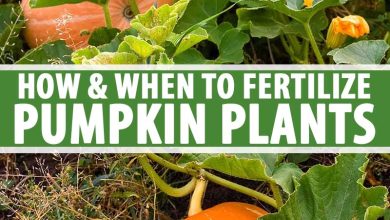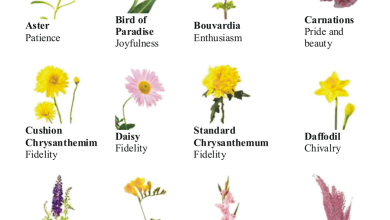How to make homemade compost the easy way to maintain your plants

Getting your plants, orchard or garden to an optimal state, supplying them with the necessary nutrients they require, is not that complicated. If you don’t want to throw away chemicals, you can learn how to make homemade compost the easy way. Do you want to take a look?
How to make homemade compost with lentils

This rooting agent is very easy to make at home, using a few lentils. In addition to being easy and effective, this type of compost can be made wherever you are. If you want to know how to do it, keep reading to find out what the recipe is.
With a tablespoon of lentils and four cups of water, we will have a powerful fertilizer for our plants. To do this we will put the water and the lentils in a container that can be both plastic and glass. Then we cover it well and wait about four days. In this way we will give the lentils time to germinate.
After this time we take a look and when we see that most of the lentils have germinated, we put them in another container along with the water and mix them well. To finish, we strain the mixture with the help of a strainer. We must keep the thick liquid and throw only the solid.
In another container we add four cups of water and a cup of the liquid made with the lentils. We can pour this liquid into a container to spray it on our plants and thus provide them with oxine, which favors the growth of its roots.
How to make homemade compost with banana
Banana skin is a great ingredient for easy homemade compost. In addition, they are a great source of potassium which plants need. If you want to know an inexpensive and easy source of providing the necessary potassium to plants, take a look at this video seen on the YouTube channel «Growing Step by Step«.
Making banana tea or banana tea we are going to provide the necessary potassium to our flowers and plants. It is a very simple homemade compost to make at home and which we can dissolve in water and use it as irrigation. The ideal is to use this type of fertilizer in the flowering and fruiting season.
How to make homemade Bocashi compost
Surely you have ever heard of Bocashi as a natural fertilizer. The truth is that it is not very complicated to do and it achieves really spectacular results. It is ideal for the development of crops and for a great regeneration of soils .
Take a look at this video seen on the YouTube channel «take me to the garden» and learn, step by step, how to make this homemade compost for your plants and soils. We will save good money by creating one of the best fertilizers for plants and to improve the structure of the soil . Perhaps it is not as easy to do as the ones we have seen previously, but if it does not go well we will have many opportunities in our garden.
How to make homemade compost with animal hair or fur

Although it sounds a bit strange, we can make a good homemade compost using hair and soil; hair can be substituted for pet fur (which is removed by brushing or cutting). Both are good and make a great source of nitrogen for the soil.
The best we can do is mix the hair with the garden soil or abano soil. Then we will place this mixture directly on the ground or near the root of the plant. As I have mentioned, hair is a great source of nitrogen and this, on earth, becomes a slow release fertilizer. This means that little by little it is decomposing and nitrogen is slowly nourishing the earth. Therefore we will obtain plants with a better development and very strong.
How to compost leaves

Making this compost is easy, although it takes more time … but it is worth it! We start by raking all the fruit leaves that we see or can find. We will try to make them clean or not too dirty. We must look for good fruit leaves (using very few oak) and that they are varied. Oak leaves should make up only 10% of the compost pile . This is because they contain more acid than others and this is not good for compost aimed at vegetables.
Once we have the necessary leaves, we put them aside, in the garden. Now we mix them all very well. Then we proceed to grind the leaves (with a manual mower), if it can be the same day that we are going to cut the grass (if we have it). This will be better because we can use cut grass remains to make homemade compost, which will provide nitrogen to it.
The next step is to rake the already ground leaves. Then we look for a place to make the pile or container (where the soil drains well), if we have not already done so. If we can, we will put a door through which to add things in an easy way. We will also put a canvas or something to cover the pile, so we will prevent the wind from taking part of the content.
To start the compost we are going to add the leaves in the pile and the remains of grass or other materials rich in nitrogen . We can also put food scraps such as vegetable peels or coffee scraps in the pile. We must avoid heavy bread, dairy or meat remains . Lastly, we must layer these ingredients: first layers of leaves, then added with nitrogen, leaves, etc.
In order for a good compost to remain, we must keep the pile moist, neither dry nor flooded. If the days are drier we can sprinkle the basin with water, with the help of the hose, but avoiding puddles or that the water remains flooded. We must also avoid removing the content within the first few weeks. It will not be until the second or third week, that we can remove.
When we first remove the compost, the surface layer should be buried and the compost inside should resurface; in such a way that the moist and cool remains above and the dry below. To do this we will stir two or three times a week with enveloping movements. Then we cover with a plastic canvas, so that the heat remains inside.
After 4 to 9 months we can use the fertilizer, when we do it it should have a uniform dark brown color. We can combine it with the soil and use it to improve the garden and orchard.
What do you think of this little article on how to make homemade compost? Are you looking to know a little more about biodegradable pots ? Do you want to know how to keep your plants clean ?

![Photo of Orange Tree Irrigation: [Needs, Frequency and Procedure]](https://www.complete-gardening.com/wp-content/uploads/2022/08/orange-tree-irrigation-needs-frequency-and-procedure-390x220.jpg)
![Photo of Bibio or Bibiones (Bibio spp.): [Concept, Detection, Effects and Treatment]](https://www.complete-gardening.com/wp-content/uploads/2022/08/bibio-or-bibiones-bibio-spp-concept-detection-effects-and-treatment-390x220.jpg)

